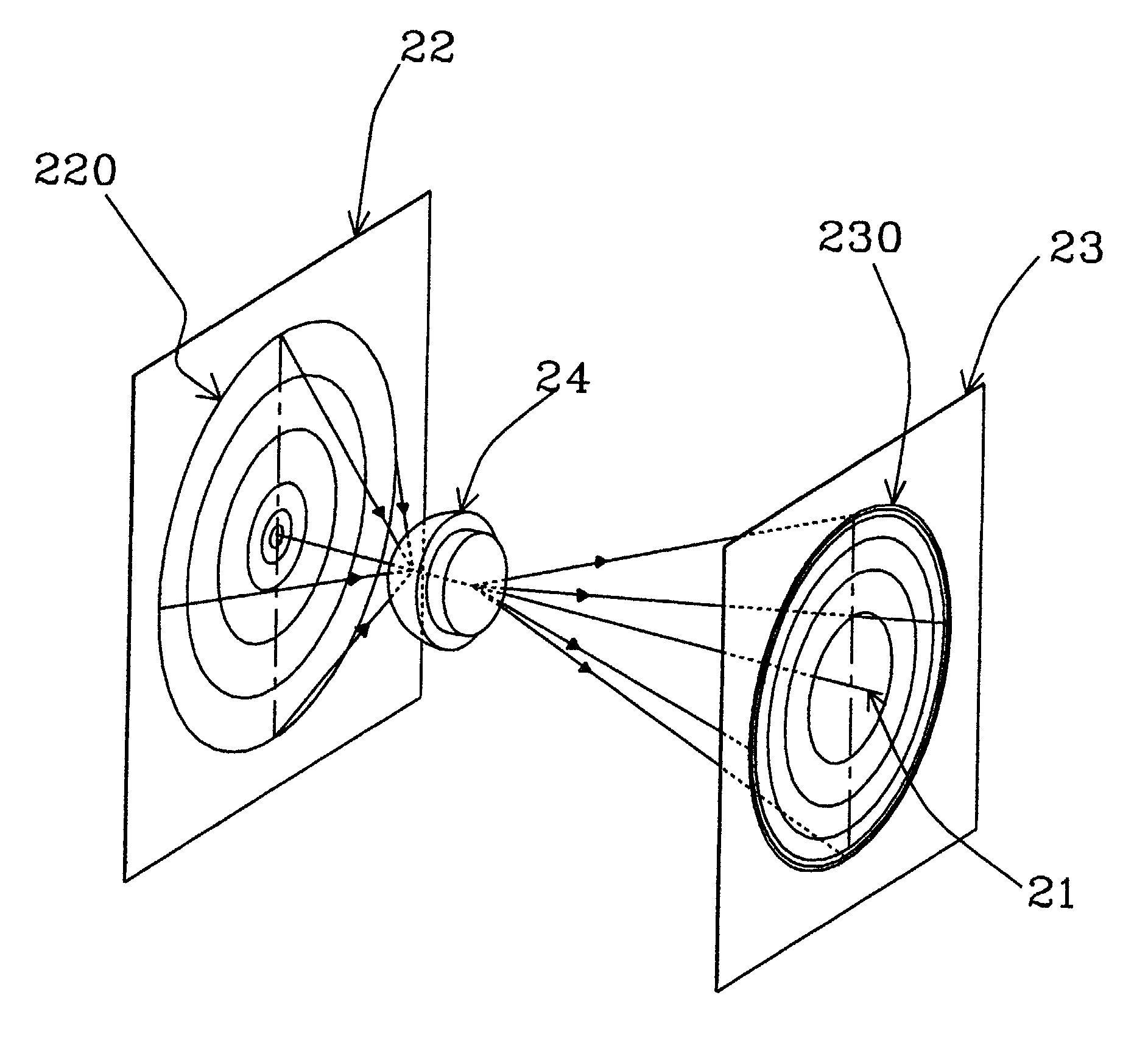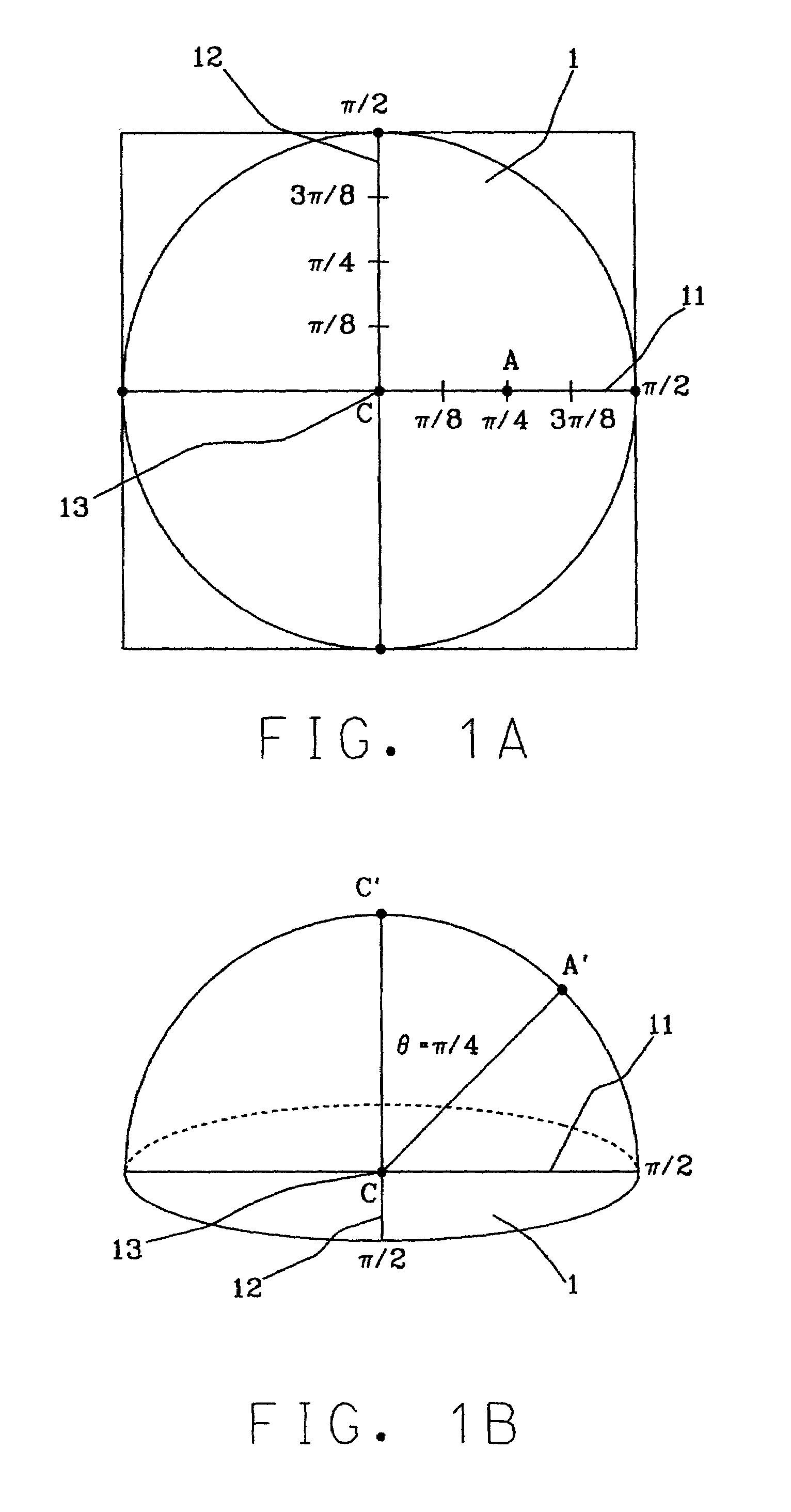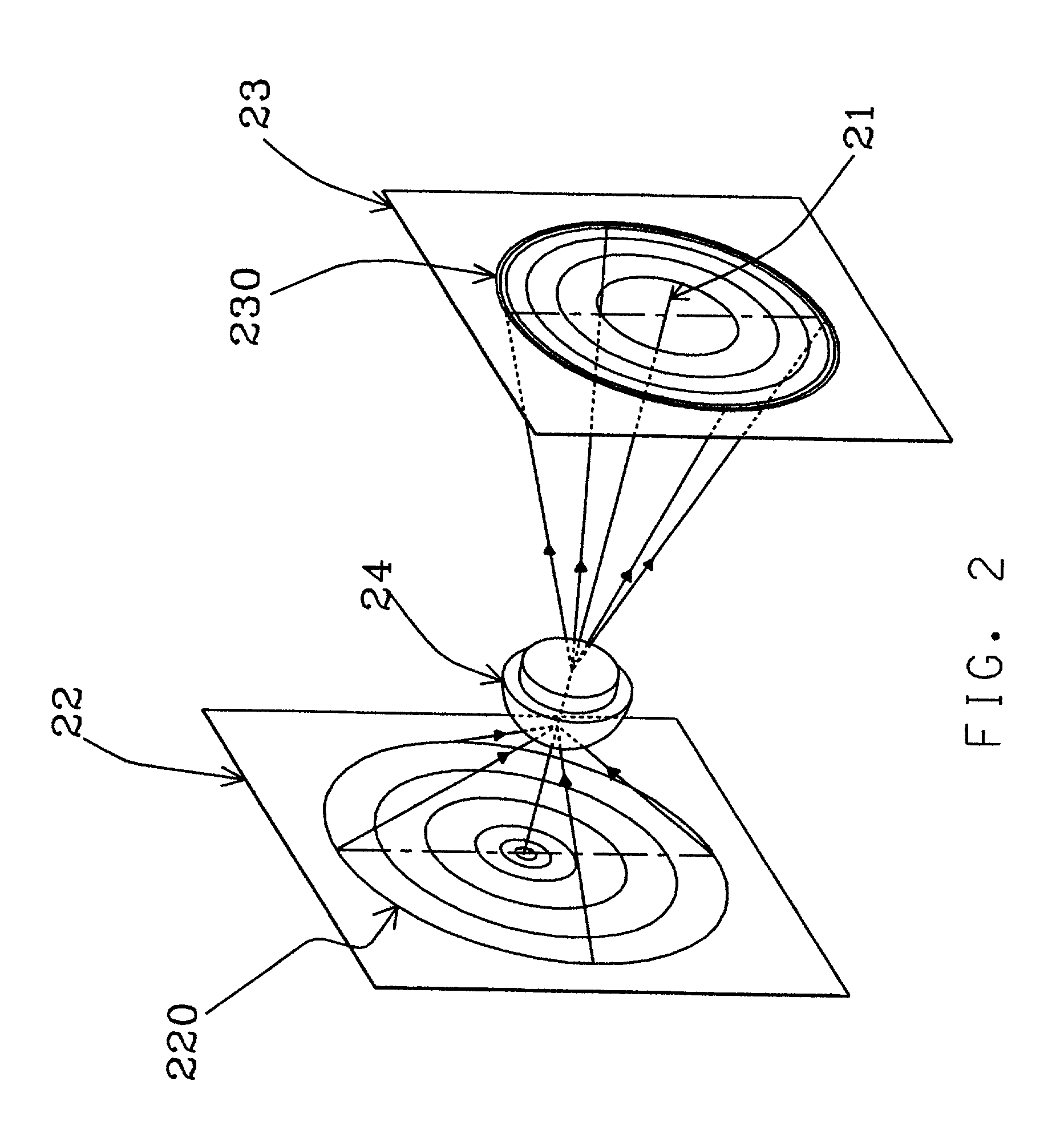Method for exploring viewpoint and focal length of camera
a technology of viewpoint and focal length, which is applied in the field of processing and showing digital images, can solve the problems of small field of view (fov), severe problem of distortion in captured images, and difficulty in obtaining accurate 3-d positions of images from reality, and achieves a larger view angle, accurate focal length, and accurate distortion.
- Summary
- Abstract
- Description
- Claims
- Application Information
AI Technical Summary
Benefits of technology
Problems solved by technology
Method used
Image
Examples
Embodiment Construction
[0033]There is severe deformation in images projected from an axis-symmetrical nonlinear-distortive lens such as the fisheye lens (FEL). Nevertheless, the distortive phenomenon has the following characteristics: the distortion is axially symmetric in viewing space and center symmetric in the imaged plane. These are well-known to those skilled in the art. The present invention first takes advantage of the characteristics to locate the optic axis of the FEL. With the reference to the optic axis then, further find out the viewpoint of the FEL and figure out the focal length by a dedicated projection mode.
[0034]Referring to FIG. 2, a calibration target 22 should be used to practice the method of the invention. The calibration target 22 provides at least one flat plane. In locating the optic axis, there is at least one geometric figure on the flat plane of the calibration target 22. If there are plural ones, they must be homocentric and symmetric, like the concentric circles shown in FIG...
PUM
 Login to View More
Login to View More Abstract
Description
Claims
Application Information
 Login to View More
Login to View More - R&D
- Intellectual Property
- Life Sciences
- Materials
- Tech Scout
- Unparalleled Data Quality
- Higher Quality Content
- 60% Fewer Hallucinations
Browse by: Latest US Patents, China's latest patents, Technical Efficacy Thesaurus, Application Domain, Technology Topic, Popular Technical Reports.
© 2025 PatSnap. All rights reserved.Legal|Privacy policy|Modern Slavery Act Transparency Statement|Sitemap|About US| Contact US: help@patsnap.com



